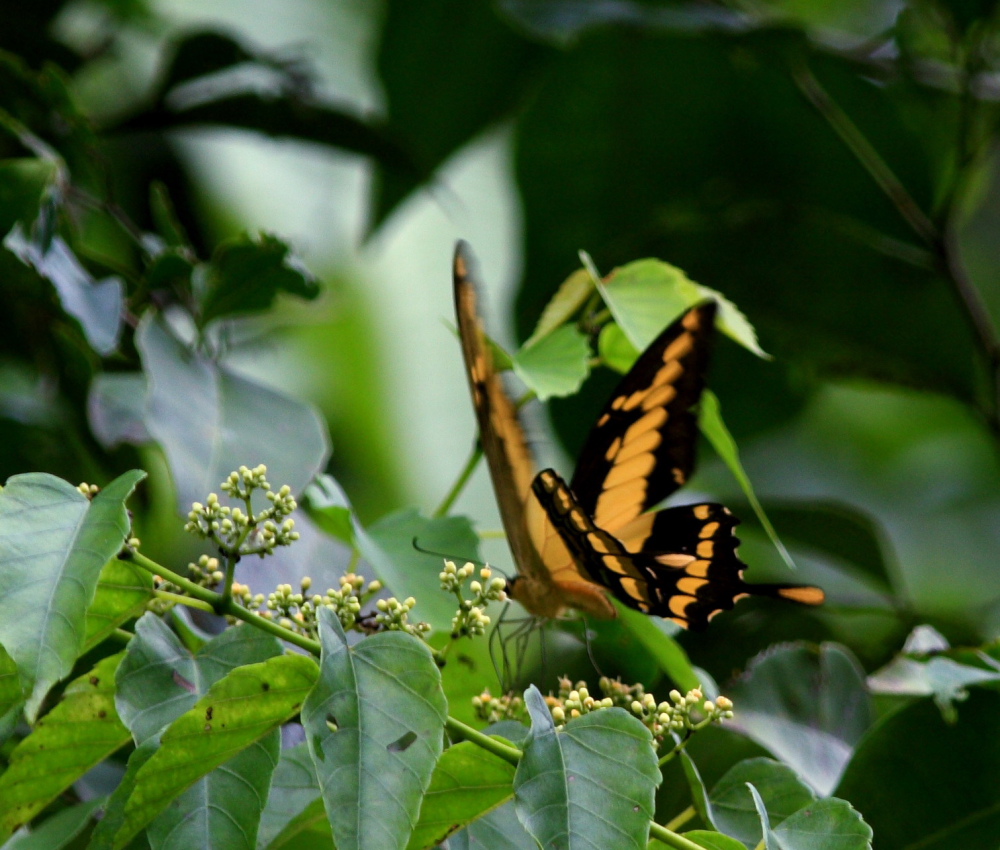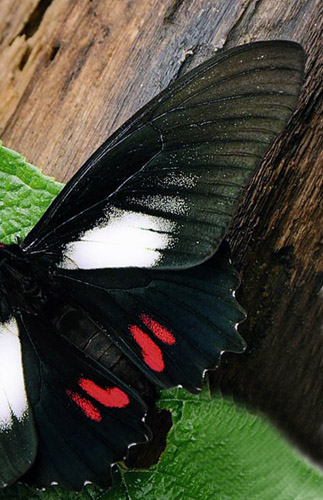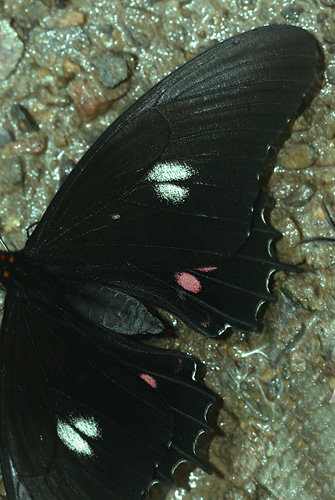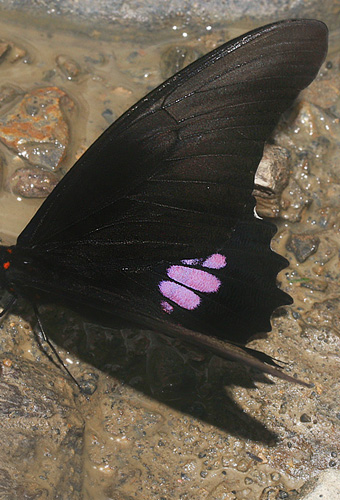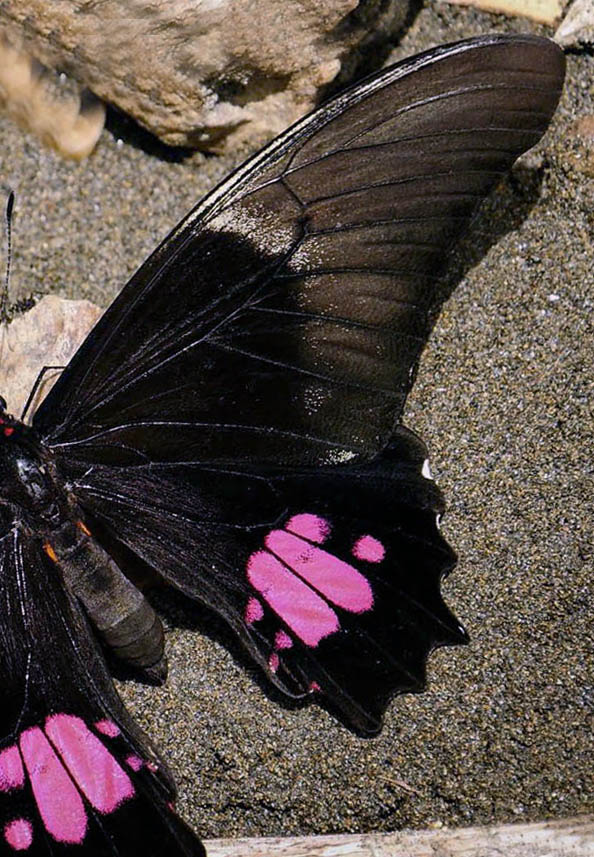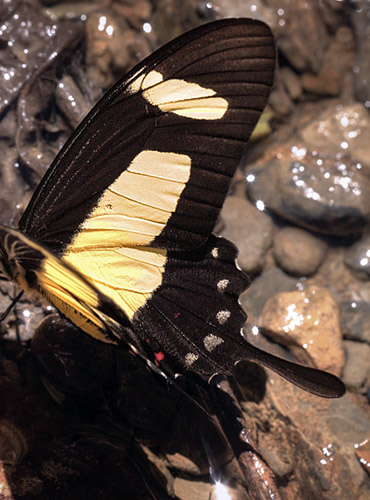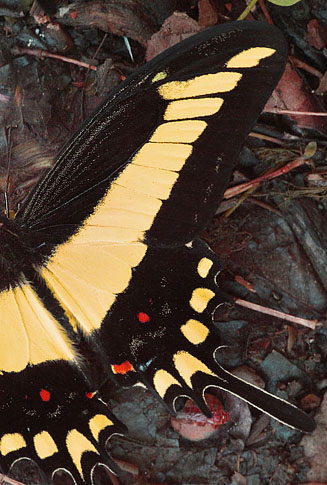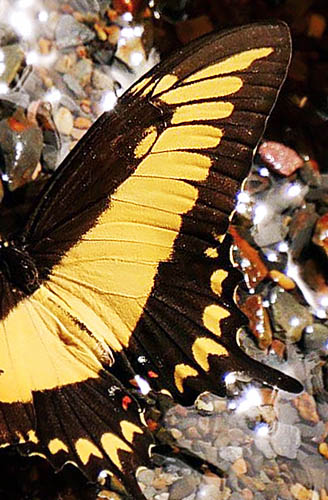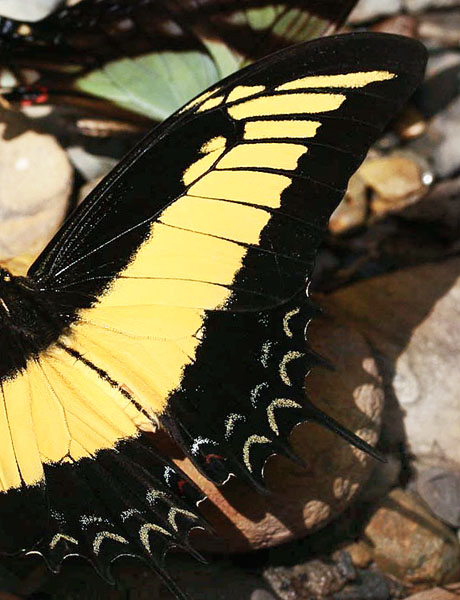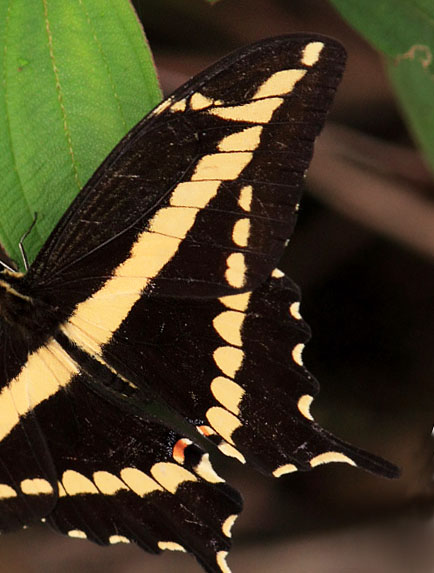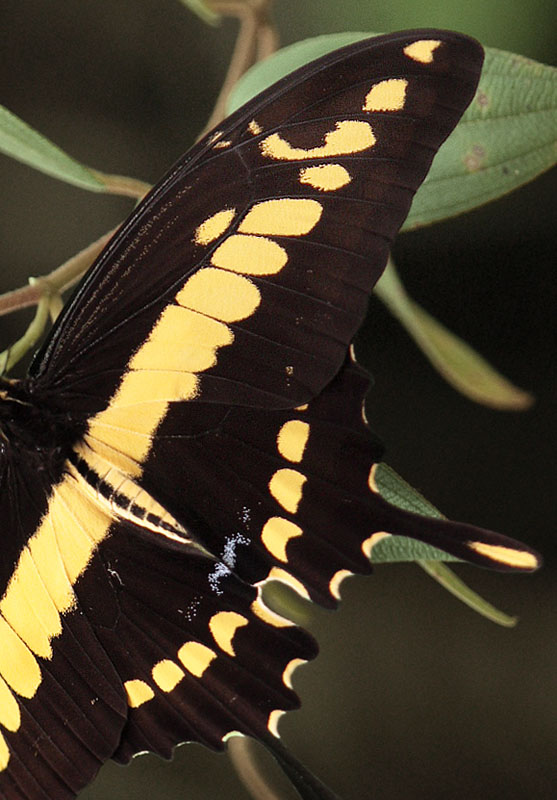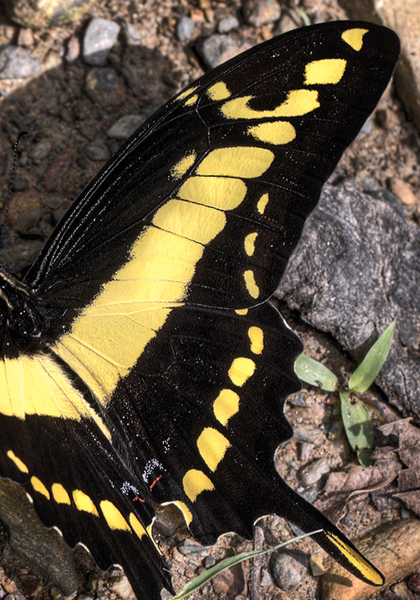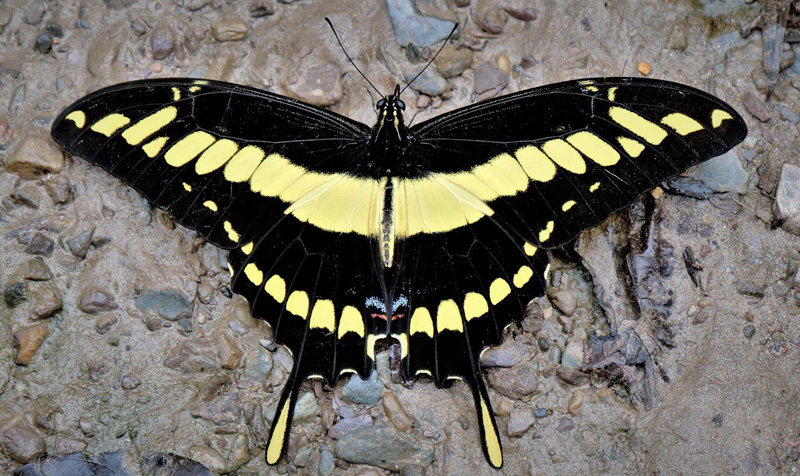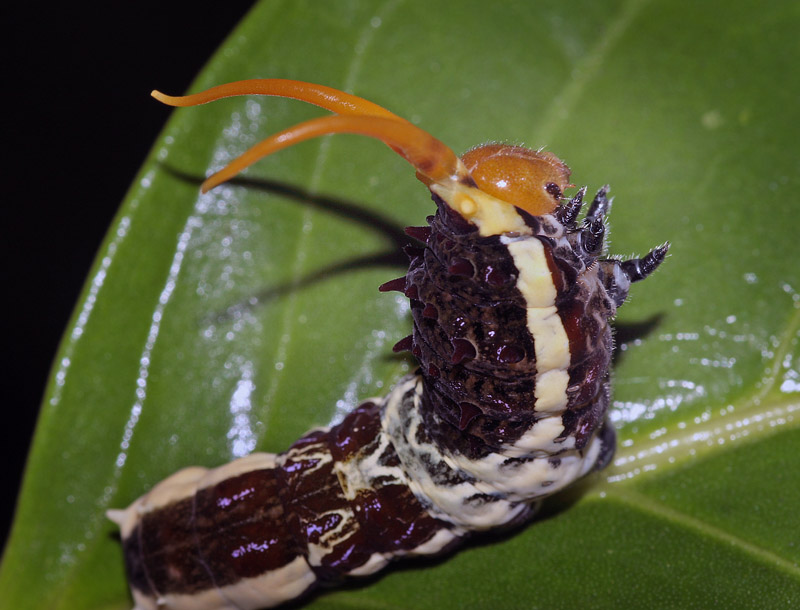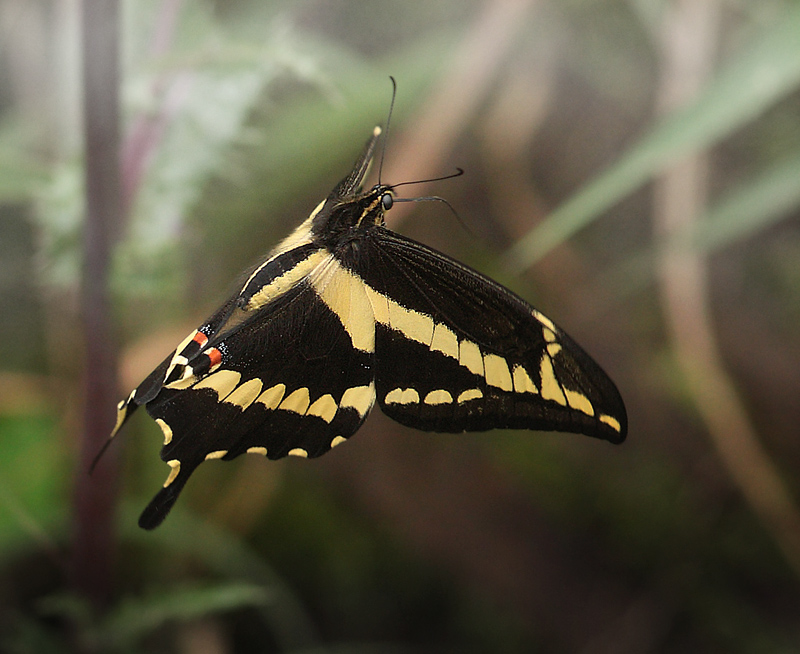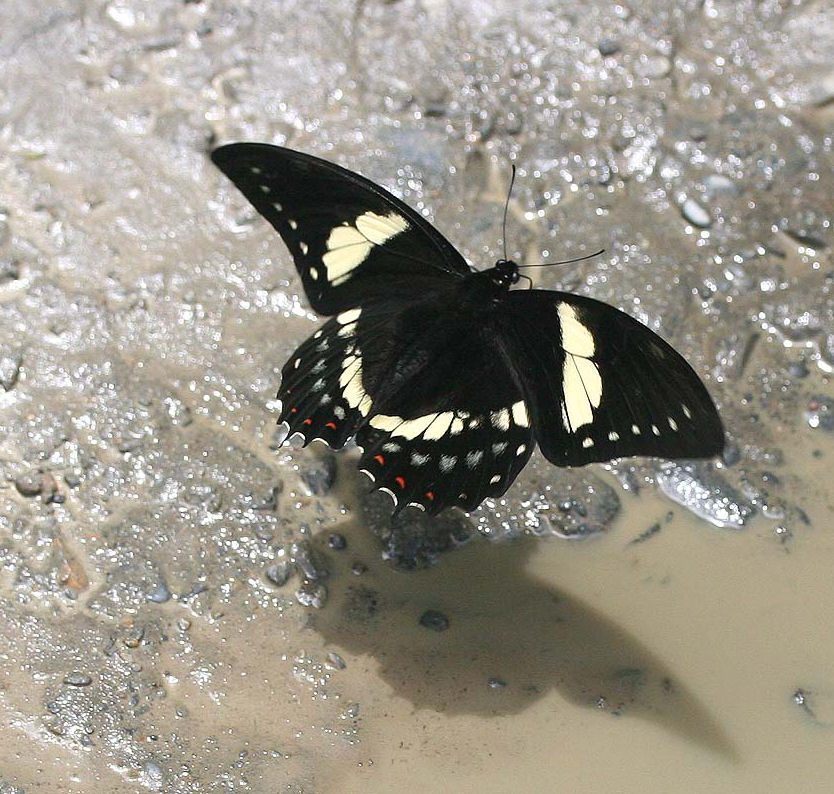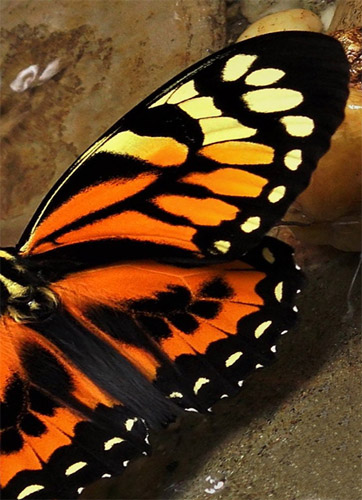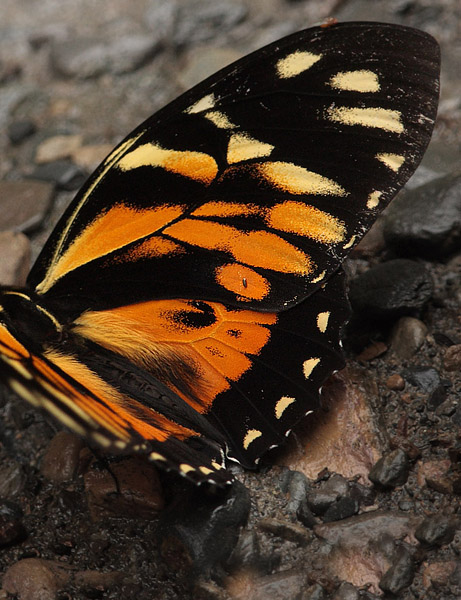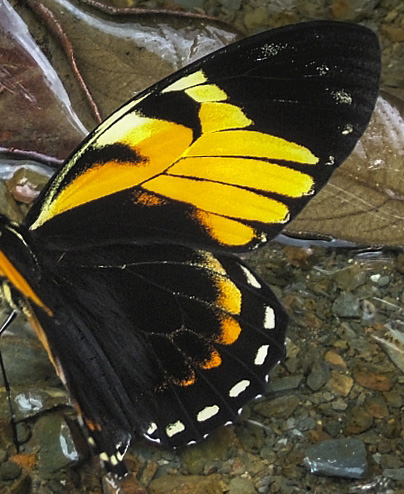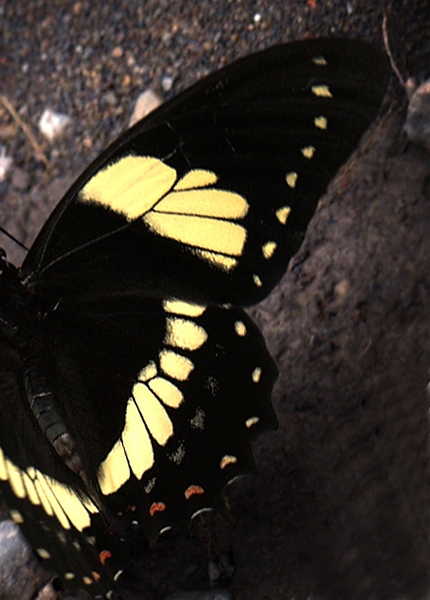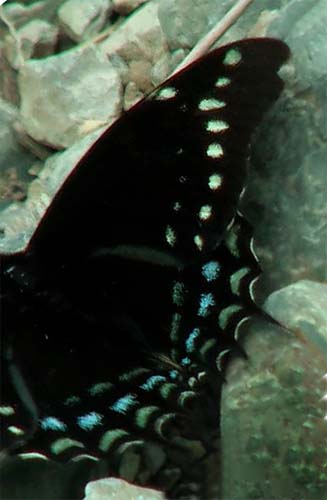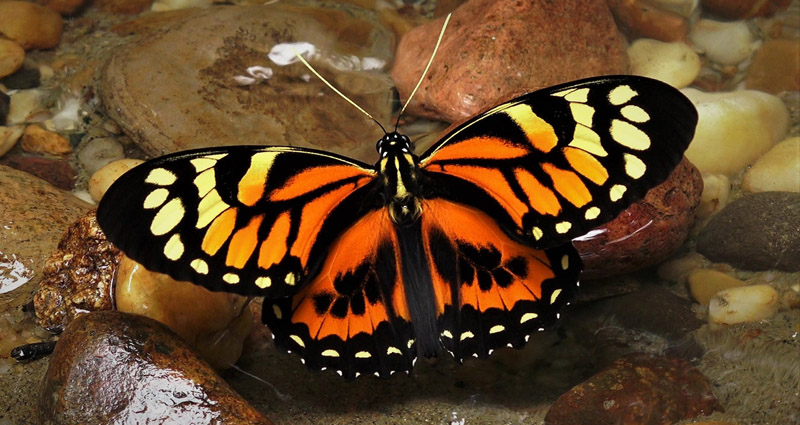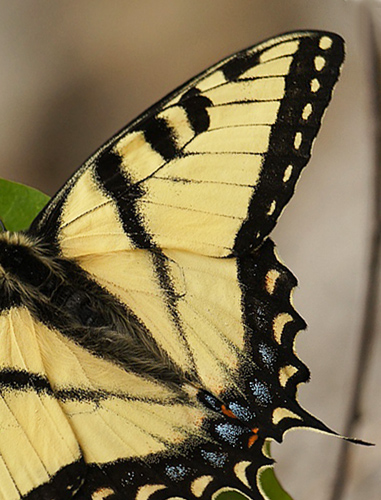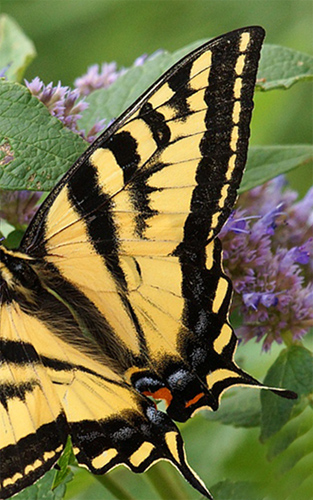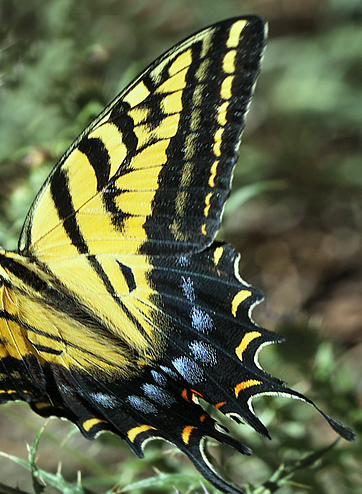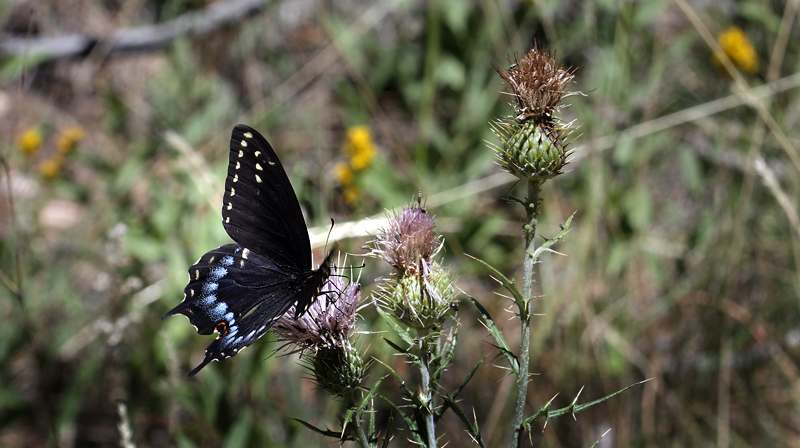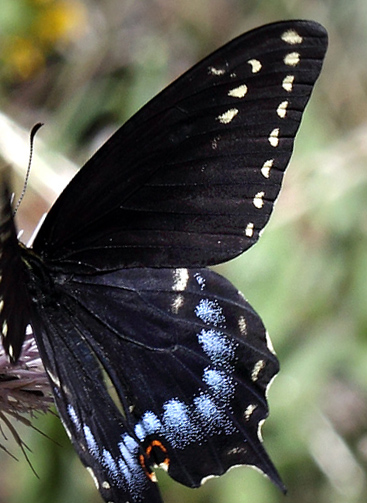Mariposas de Bolivia
sitio 59
first update d. 14 february 2016
last update d. 20 january 2020
___________________
Genus Heraclides (Hübner, 1819).
Thoas
Swallowtail, Heraclides thoas ssp. cinyras (Ménétriés, 1857).
Rio Zongo, between
Caranavi and Guarnay, Yungas, Bolivia
d.
30 January 2008.
Photographer: Lars Andersen
| Heraclides
:
comprises of 33 species from southern United
States, Mexico, Central America, Amazonas
rainforest up to Andean cloudforest, and south to
Misiones in Northern Argentina and Paraguay in
Southern America. Some of the Heraclides species are marked with cream spots and bands, and have obvious affinities with their Holarctic counterparts. Others including Ruby-spotted Swallowtail, H. anchisiades and Spike-tailed Swallowtail, H. isodorus are black with pink patches on the hindwings and are superficially similar to Cattle-heart, Parides and Swordtail, Eurytides. Habitats: This family are found in many different habitats including tropical rainforest, cloudforest, humid deciduous forest, orchards and suburban zones at altitudes between sea level and about 2000m. Behaviour: The butterflies are only active in bright sunshine. Both sexes will visit Lantana and the flowers of many trees and shrubs. Males are often seen along the river beaches and dry river beds, imbibing mineralized moisture. They are regel seen singly, but sometimes several gather together, regel amidst aggregation of Nymphalids and Perids. When feeding either at flowers or on the ground, the wings are kept constantly fluttering - a feature common to Swallowtails throughout the world. After several minutes, if undisturbed, they eventually relax and fully outspread their wings. The larvae feed on various species of the Rue,Rutaceae family: including Limes, Lemon, Citrus, Sapote, Casimiroa, Lime Prickly Ash, Zanthoxylum species and Peppervines, Piper species. All Heraclides caterpillars are equipped with an large extrusible forked appendage called an osmeterium which is situated behind the head. This organ is everted if the caterpillar is molested, and gives off a noxious pheromone containing isobutyric acid, which is used as a defence against ants. |
| Cramer's Swallowtail | Spike-tailed Swallowtail | Ruby-spotted Swallowtail | Ruby-spotted Swallowtail |
| Heraclides hyppason hippasonides | Heraclides isidorus | Heraclides anchisiades | Heraclides anchisiades capys |
| (Grose-Smith, 1902) | (E. Doubleday, 1846) | (Esper, 1788) | (Hübner, 1809) |
| Photographer; Peter Møllmann | Photographer; Lars Andersen | Photographer; Lars Andersen | Photographer; Peter Møllmann |
| Band-gapped Swallowtail | Bolivian Swallowtail | Broad-banded Swallowtail | Androgeus Swallowtail |
| Heraclides torquatus | Heraclides lamarchei | Heraclides astyalus phanias | Heraclides androgeus |
| (Cramer, 1777) | (Staudinger, 1892) | (Rothschild & Jordan, 1906) | (Cramer, 1775) |
| Photographer; Lars Andersen | Photographer; Lars Andersen | Photographer; Peter Møllmann | Photographer; Lars Andersen |
| Straight-banded Swallowtail | Thoas Swallowtail | Thoas Swallowtail |
| Heraclides paeon | Heraclides thoas cinyras | Heraclides thoas brasiliensis |
| (Boisduval, 1836) | (Ménétriés, 1857) | (Rothschild & Jordan, 1906) |
| Photographer; Lars Andersen | Photographer; Lars Andersen | Photographer; Lars Andersen |
Thoas Swallowtail, Heraclides
thoas ssp. brasiliensis.(Rothschild
& Jordan, 1906).
Caranavi Highlands, Yungas, Bolivia january 28, 2019.
Photographer; Peter Møllmann
Heraclides androgeus. Caranavi d. 8 january 2010.Photographer; Lars Andersen
Mountain Swallowtail, Heraclides paeon in flight.
Kori Wayku inca
trail, Yungas, Bolivia on 1th. february 2010. Photographer; Lars Andersen
___________________
Genus Pterourus (Scopoli, 1777)
| Pterourus: the taxonomy of North
and South American 'Papilio' genus/species has
recently been revised, with the effect that
almost all South American species and several
North American species have been transferred to Heraclides, 33 species, or in Pterourus, 29 species. Comprises of 29 species from southern Alaska, Canada, United States, Mexico, Central America, Amazonas rainforest up to Andean cloudforest, and south to Misiones in Northern Argentina and Paraguay in Southern America. Habitats: This family in Soutamerica are found in tropical rainforest at altitudes between sea level and about 1400m. The Northamerican species are in open woodland, at altitudes between 0-1500m. Males seen flying high in the canopy, where they visit the flowers, the hilltopping on hills, small mountains and the highest trees in the forest. Where females come to mate. Males are often seen along the river beaches and dry river beds, imbibing mineralized moisture. They are regel seen singly. The larvae feed on foodplants which include Almond, Cherry, Pearch and Plum, Prunus species. Hawthorn, Crataegus. Apple, Malus (Rosaceae). Poplar, Aspen and Cottonwood, Populus (Salicaceae). Maple, Acer (Aceracaea). Basswood, Tilia (Tiliaceae), Hornbeams, Carpinus. Alder, Alnus (Betulaceae). Tulip Tree, Liriodendron (Magnoliaceae) and various other trees and shrubs. |
| Neyi Swallowtail | Mimic Swallowtail | Black Mimic Swallowtail | Nomad Swallowtail | Cloud Forest Swallowtail |
| Pterourus neyi | Pterourus zagreus | Pterourus bachus | Pterourus menatius | Pterourus warscewiczii |
| (Niepelt, 1909) | (Fruhstorfer, 1915) | (Rothschild & Jordan, 1906) | (E. Doubleday, 1846) | (Hopffer, 1846) |
| Photographer; Henrik Bloch | Photographer; Lars Andersen | Photographer; Lars Andersen | Photographer; Lars Andersen | Photographer; Peter Møllmann |
Neyi Swallowtail, Pterourus neyi (Niepelt, 1909). Tena, Ecuador d. 3 january 2020. Photographer; Henrik Bloch
| Eastern Tiger Swallowtail | Western Tiger Swallowtail | Two-tailed Swallowtail |
| Pterourus glaucus | Pterourus rutulus | Pterourus multicaudata |
| (Linnaeus, 1758) | (Lucas, 1852) | (W. F. Kirby, 1884) |
| Photographer; Carsten Siems | Photographer; Carsten Siems | Photographer; Henrik S. Larsen |
___________________
Cloud Forest Swallowtail, Pterourus warscewiczii (Hopffer, 1866) 240 fps.
Rio Tunki 1740 m.,
Caranavi, Yungas, Bolivia January February 5, 2022. Photographer; Peter Møllmann
___________________
Genus Papilio (Linnaeus, 1758)
| Papilio: back in the 18th
century when
Linnaeus created the "System
Naturae",
the word "Papilio" was used as the
genus name for every known species of butterfly
in the world. Since then much has been learnt
about the relationships between different
species. Consequently most have been reassigned to new genera, and only about 215 swallowtails of the 17680 currently known butterflies species are retained in Papilio genus. There are still 8 species of Papilio in Nearctic and Neotropical region. Wherein one species Old World Swallowtail, Papilio machaon are found from Alaska, Canada, California and east to Colorado. Black Swallowtail, Papilio polyxenes are more widespread from Canada, USA, Mexico, Caribbean, Central America, Venezuela, Colombia, Ecuador and Peru Andean mountains. Habitats: Throughout most of it's range the Swallowtail shows itself to be highly adaptable, utilising a wide variety of habitats including sub-arctic tundra in Canada, prairies, woodlands and sagebrush in the south of the USA; hay meadows, roadside verges and river banks. You can see the swallowtails in the marsh where the fodder plant grows, but after a time they fly on the flower-rich meadows, coastal cliffs and commons, where they are avid flower visitors. Hill-toping of hills and mountain sides. The larvae feed on foodplants which include Mugwort, Wormwood, and Sagebrush, Artemesia family or Butterbur, Petasites (Asteraceae), although various Anise, Angelica, Carrot, Coriander, Dill and Fennel, Umbelliferae family e.g. Hogweed, Heracleum are used in the Yukon. |
| Baird's Swallowtail |
| Papilio machaon bairdii |
| (W. H. Edwards, 1866) |
| Photographer; Henrik S. Larsen |
___________________
Mariposas de Bolivia
Butterflies in Northern America
